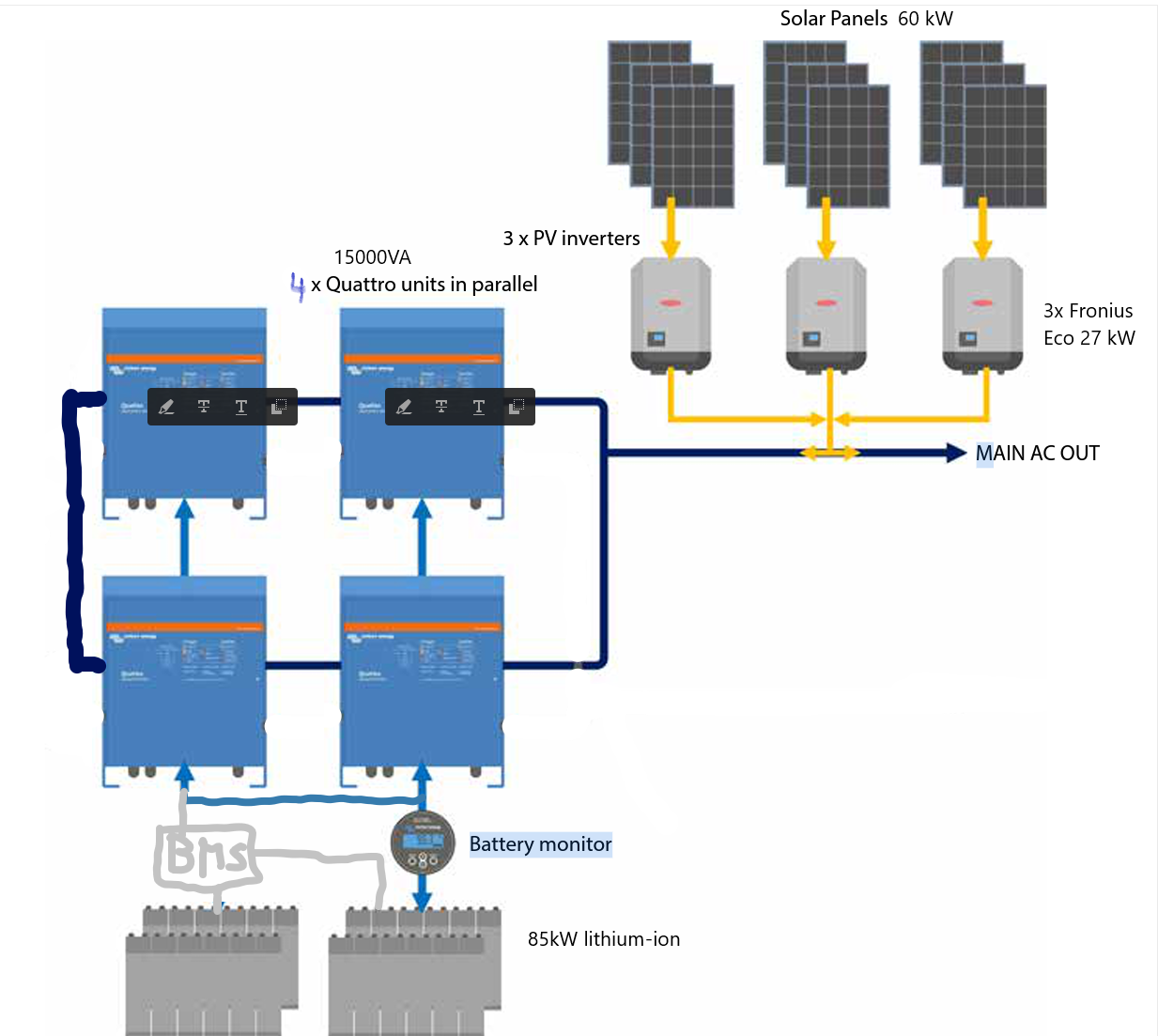Hi Everyone,
I'm currently planning to build a off-grid solar system to be used in an agriculture farm. The system will be mostly used to power the water irrigation system and to will have to provide a mini-grid as we are several Kms away from the grid.
The system will be composed of the following components:
1-60kW Solar array with 450W mono panels
2-3x Fronius Eco 27 3 Phase Inverters
3-4x Quatro 15000VA (2xPh1, 1xPh2, 1xPh3)
4-85kW Battery Storage

The main load of the system are the water pumps that source water from a borehole well and the distribution pumps that adds boost pressure. The majority of load will be exclusively operated during sunlit hours and the energy produced should be consumed directly from the output of the Fronius inverters while the remaining output will be used to slowly charge the batteries. The are a few small loads such as lights, a weather station and an alarm system that will be using the battery during the night as well as the residual consumption of the Quattros and Inverters.
When the main loads are not active the frequency shifter functionality should adapt the inverters output.
The reason for the post is to ask for comments on the setup, if anyone thinks there something I missed or any foreseen problems. Also I would like simplify the setup and use a single 3 Phase inverter, does Victron provide a compatibility matrix of brands and models that enable off-grid functionality with the Quattro.
Thanks a lot
